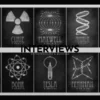Prototyping Your Product: From Brainwave to Breakthrough
You have a million-dollar idea. That’s awesome! But before dreaming of wealth, let’s discuss prototyping. A prototype acts like training wheels for your concept. It won’t be your final product, but it protects you from major mistakes.
Why Prototype? Ideas Alone Are Just…Ideas.
Turning an idea into a product is tricky. It’s like trying to bake without a recipe. You might have a basic notion of “cake,” but without practice, it might become a disaster. Prototyping lets you test concepts, helping to refine your idea before production.
The Prototype Creation Journey: A Step-by-Step Guide
Ready to build a helpful prototype? Here’s the breakdown:
- Research is Your Best Friend: Before sketching, dive into research. Know your market, your users and their problems. No use making a self-stirring mug if everyone prefers a spoon.
- Sketch it Out: Use pen and paper or a digital tool. Visualize your product. Don’t aim for perfection; these sketches are just brainstorming sessions.
- Virtual Modeling: After sketches, make a digital model. It could be 2D or 3D. This helps explore designs without needing materials.
- Need Help? Don’t Be Alone: Prototyping can be tricky. If you feel overwhelmed, hire experts – designers, engineers, or specialists. It’s smart to seek help when needed.
- Proof of Concept: Create a mini-prototype to test core functionality. Does it work as intended? This validates your concept before the main build.
- Prototype Time: Build your actual prototype using insights from research and sketches. It should work well enough for testing.
- Rinse and Repeat: Prototyping isn’t straight. You’ll revisit steps, refine your design, and iterate based on testing. Think of it as chiseling away at stone to reveal art (or a usable product).
Prototyping Stages: From Fuzzy Idea to Functional Form
Prototyping includes stages, each with purpose:
- Product Concept Models: These visuals highlight aesthetics and ideas. They excite stakeholders about your vision. Less about function, more about drawing interest.
- Proof of Concept: This shows products can work. Focus on core functions. Does it solve a problem? Can it perform tasks?
- Industrial Design Prototypes: Here, design and user experience refine. It’s about making the product functional and user-friendly.
- Functional Prototypes: These mimic the final product closely. They allow for rigorous testing and design refinement.
- Pre-Manufacturing Research Prototypes: Test manufacturing processes with these prototypes. They ensure production can happen smoothly.
Turning that Lightbulb Moment into a Market Marvel
You have an idea. Now how to turn it into something people buy?
- Validation: Validate your idea with market research. Do people need your product? Prototyping is vital to test it.
- Business Plan: After validation, draft a business plan. Know your audience, competition, and how it generates profit.
- Design and Development: Design shapes every step. From concept through production, it integrates innovation and user experience.
- Launch and Marketing: Launching is announcing your creation. A solid launch and marketing strategy gets it in the market effectively.
- Feedback and Iteration: The journey continues after launch. Get user feedback to adapt product and strategy. Iteration leads to lasting success.
Getting Your Prototype Made: From Idea to Tangible Thing
Ready to create a prototype? Here’s the process:
- Conceptualize and Document:
- Refine Your Idea: Ask key questions about the problem, target audience, and features. Clear thinking will guide your prototype.
- Document Everything: Create sketches, diagrams, notes for clarity. This helps keep your vision consistent through prototyping.
- Design and Prototyping:
- Sketch Your Design: Start basic sketches to visualize features and components.
- Digital Prototyping Tools: Use 3D modeling software for finer details. Many user-friendly options exist.
- 3D Printing: For physical prototypes, 3D printing allows quick model creation to test designs. Think of it as having a mini factory.
- MVP: Build an initial version with essential functions to test assumptions early on.
- Outsource to Experts: Seek help from prototyping services or specialists for skills you lack.
- Find Resources and Support:
- Pattern/Model Makers: Experts in prototypes, particularly for casting or molding.
- Online Resources: Sites like Maker’s Row and Alibaba help find manufacturers and resources.
- Network: Connect with other inventors and go to trade shows. Networking opens doors.
- Consider Costs and Timeline:
- Prototype Costs Vary: Basic prototypes can cost hundreds, while complex ones may reach thousands. Budget wisely.
- Prototyping Takes Time: Don’t rush through this process. Set realistic timelines and anticipate delays.
- Cost Breakdown by Stage:
- Provisional Patent: File for a provisional patent to safeguard your idea. This secures your claims during prototyping.
- Patent Application and Prototypes: You can file without a prototype, but having one enhances the application.
The Price Tag of Prototyping: How Much Will This Toy Cost?
The cost of prototypes varies widely. Expect $100 to more than $30,000. The costs depend on product complexity and detail levels involved.
of risk involved are the main drivers of cost.
Like a construction project, prototyping costs go up as you enter new stages:
- Stage 1: Concept Design: Starting at $1,000. Basic user experience simulations like wireframes—the blueprint stage.
- Stage 2: Design Engineering: Starting at $5,000. This creates advanced prototypes closer to reality.
Types of Prototypes: From Paper to (Almost) Product
Prototypes come in various forms, each having a unique purpose:
- Low-Fidelity Prototypes: Basic, quick, and cheap. These are paper sketches, cardboard models, or simple wireframes. Great for early-stage concept testing.
- Medium-Fidelity Prototypes: More refined than low-fi but not yet the final product. Digital wireframes, interactive mockups, and basic working models fall here, offering more detail and interactivity.
- High-Fidelity Prototypes: Close to the final product before production. These look and function very much like what you’ll release. Examples are polished interactive frontends or fully working models. Used for user testing and design validation.
Prototypes in action include:
- Wireframes (skeletal blueprints of your product).
- Interactive Slides (like a PowerPoint for product flow).
- Landing Pages (to test marketing messages and user interest).
- Working Models (physical prototypes to touch and interact with).
- Interactive Frontends (clickable app or website demos).
- Videos (explaining your product concept or showing functionality).
Design Process Steps: Prototyping in the Grand Scheme
Prototyping fits into a bigger design process. Here’s a typical order:
- Identify the Problem: What needs solving?
- In-depth Research: Understand the problem and users.
- Ideation: Brainstorm possible solutions.
- Evaluate and Select: Choose the best solution.
- Create a Prototype: Build a tangible representation of your solution.
- Test and Troubleshoot: Collect feedback and identify issues.
- Improve and Release: Refine based on testing and launch the final product.
Prototype Hallmarks: What Makes a Prototype a Prototype?
Prototypes share some key traits:
- Early Models: Created early in the design process.
- Simulate Design and Functionality: Mimic the final product’s look and feel.
- Concept Testing: Test ideas and assumptions.
- Feedback Gathering: Collect user input.
- Design Iteration: Facilitate improvements before final development.
Pro-Tips for Pro-Level Prototypes
Want your prototypes to look professional?
- Know Your Prototype’s Purpose: What questions do you want to answer with this prototype?
- Accurate Representation: Ensure your prototype reflects key aspects of your product—size, shape, interface.
- Production-Grade Materials (When Possible): If feasible, use materials similar to what you’d use in the final product for realistic feel and performance.
- Brand It (Subtly): Add your company logo or text as a touch of professionalism.
- Finish Strong: Pay attention to details, even in a prototype. A polished prototype shows a commitment to quality.
Does Your Prototype Need to Be Perfect? Spoiler: Nope!
Your prototype does not need to be flawless or fully functional. Its job is to test ideas, not be the finished product. Prototypes test ideas, find problems, and gather feedback early. Sometimes a “working” prototype is to check core functionality, but it is not always necessary.
DIY Digital Prototypes: Keep it Simple
The easiest way to start digital prototyping? Grab a pen and paper! Sketch your product’s look, features, and functionality. To advance, visual prototyping software like Figma or Vectr can be used, though they require a steeper learning curve. Start simple, iterate, then get fancy.
Selling Ideas Sans Patent: Is it Possible? Risky? Both?
You can sell an idea without a patent. However, protect yourself first! Get a Non-Disclosure Agreement (NDA) before sharing your idea with anyone. This acts as idea insurance.
Idea Pitch Protection: Playing it Safe When Sharing Your Brainchild
Pitching can feel risky. How do you share without losing your idea? Focus on:
- Confidentiality: State clearly that your idea is confidential.
- Intellectual Property (IP) Protection: Mention any patent applications or IP protections in place.
- Selective Sharing: Don’t share everything with everyone. Disclose details strategically with necessary parties only.
- NDAs: Get everyone involved to sign an NDA before revealing details. It’s legally binding and shows you’re serious.
Design Thinking & Double Diamond: Fancy Frameworks, Real Value
Want to delve into design processes? Check these frameworks:
- Design Thinking (5 Stages): Empathize, Define, Ideate, Prototype, and Test. A human-centered problem-solving approach.
- Double Diamond Approach: Divergent thinking (exploration) followed by convergent thinking (focus). Two diamonds show how to expand and contract thinking during design stages.
Product Design Stages: The Grand Timeline
Product design is a journey. Key stages include:
- Research and Discovery
- Ideation
- Concept Development
- Prototyping
- Testing and Validation
- Final Design
- Production
Quick Recap: Creating a Prototype in a Nutshell
Create a prototype quickly:
- Define Goals & Requirements
- Develop Proof of Concept
- Build Low-Fidelity Prototype
- Test, Refine, Iterate (repeat until satisfied or out of coffee).
Prototyping seems like extra work, but it shortcuts building better products and averts costly mistakes. Get prototyping and turn ideas into breakthroughs!





